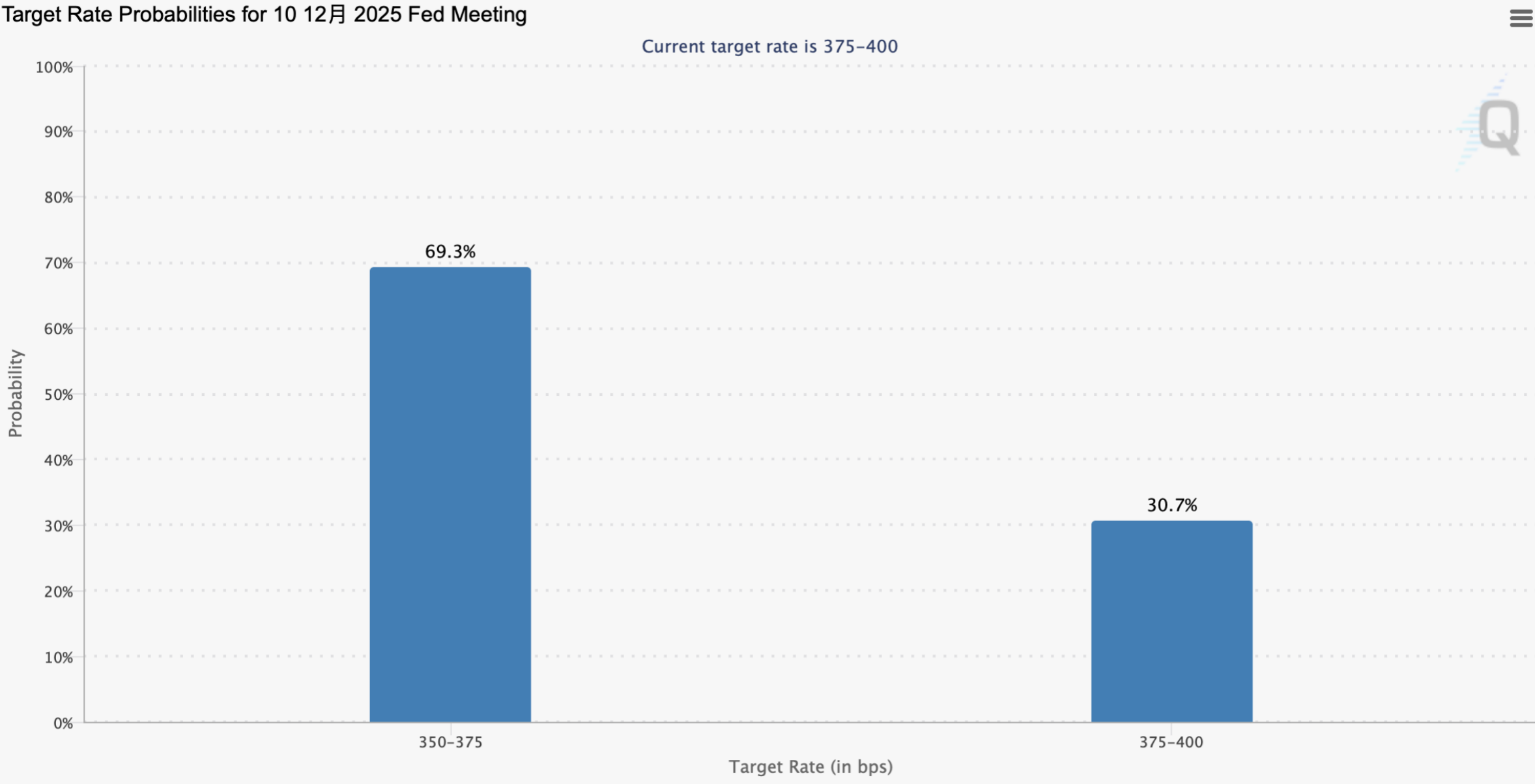Nearly 90% of central banks worldwide have cut interest rates, and macro data confirms that the crypto bull market is still in its early stages
The current economic environment is more conducive to continued market expansion rather than contraction.
The current economic environment is more supportive of continued market expansion rather than contraction.
Source: cryptoslate
Compiled by: Blockchain Knight
Julien Bittel, Head of Macro Research at Global Macro Investor, stated that based on comprehensive economic indicators, the current cryptocurrency bull market is still in its early stages.
In an analysis shared on the X platform on September 8, Bittel refuted the prevalent "cycle peak" sentiment in the cryptocurrency market and challenged the notion of a "late-cycle" phase by analyzing traditional economic indicators.
A typical late-cycle economy usually exhibits the following characteristics: extremely high manufacturing sentiment (ISM index around 60), elevated services sentiment, strong homebuilder confidence, robust consumer and labor confidence, bullish investor sentiment, and accelerating wage growth.
However, Bittel pointed out that current data presents a completely different picture. After incorporating indicators from ISM (Institute for Supply Management), NAHB (National Association of Home Builders), NFIB (National Federation of Independent Business), BLS (Bureau of Labor Statistics), AAII (American Association of Individual Investors), and The Conference Board into a comprehensive sentiment measurement system, he found that U.S. economic sentiment remains "very mild," far from the extreme optimism typical of late-cycle phases.
He stated: "The current economy does not exhibit above-trend late-cycle characteristics; it is more like an early-cycle economy attempting to build momentum."
Central bank policies provide additional support for this view. Nearly 90% of central banks worldwide are implementing interest rate cuts, which Bittel describes as creating an "unconventional" environment and, in the long run, providing "strong impetus for the business cycle."
The trend in oil prices further confirms the "early-cycle" judgment: current oil prices are nearly 20% below trend levels and continue to decline. This indicates that the current financial environment is accommodative, rather than the tightening typically seen in late-cycle phases.
Historically, since the early 1970s, oil prices being 50% above trend levels has often signaled the onset of an economic recession.

Data from the Temporary Help Services industry shows "early-cycle characteristics": growth in this sector is gradually recovering from very low levels, indicating the economy is in a recovery phase rather than a downturn.
Bittel pointed out that late-cycle phases are usually characterized by "year-on-year growth slowing from positive," reflecting an overheated economy losing momentum.
He attributed the rise in unemployment rates to the lagging nature of employment data, calling it "a reflection of the past six months in the rearview mirror."
Before companies decide to hire "high-cost full-time employees with benefits and pensions," they usually first increase employee overtime hours and hire temporary workers.
Bittel also defined the current economic environment as "transitioning from early-cycle to mid-cycle," describing this process as moving from "macro spring" (rising growth, falling inflation) to "macro summer" (rising growth, rising inflation).
He concluded that this macro perspective challenges the prevailing sentiment in the current cryptocurrency market, which believes the bull market cycle has peaked. On the contrary, the current economic environment is more supportive of continued market expansion rather than contraction.
Disclaimer: The content of this article solely reflects the author's opinion and does not represent the platform in any capacity. This article is not intended to serve as a reference for making investment decisions.
You may also like
Powell’s ally makes a major statement: Is a December rate cut reversal now highly likely?
There are divisions within the Federal Reserve regarding a rate cut in December, but due to a weakening job market and statements from senior officials, market expectations have shifted in favor of a rate cut. Economists believe the Federal Reserve may take action to address economic weakness, but internal disagreements focus on policy tightness, interpretations of inflation, and contradictions between employment and consumption. Summary generated by Mars AI. This summary is produced by the Mars AI model, and its accuracy and completeness are still in the process of iterative updates.

MSTR to be "removed" from the index, JPMorgan research report "caught in the crossfire," crypto community calls for "boycott"
JPMorgan warned in a research report that if MicroStrategy is eventually excluded, it could trigger a mandatory sell-off amounting to 2.8 billions USD.

Weekly Crypto Market Watch (11.17-11.24): Market Continues to Decline, Potential for Recovery as Rate Cut Expectations Rise
The reversal of Fed rate cut expectations has led to significant volatility in BTC prices, with the market remaining in a state of extreme fear for 12 consecutive days. ETF funds continue to flow out, the altcoin market is sluggish, and investor trading enthusiasm is waning.

zkFOL: The Bitcoin Soft Fork Promising Native Privacy & DeFi

